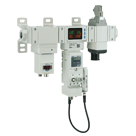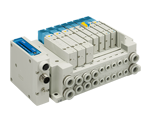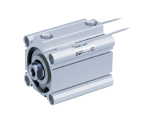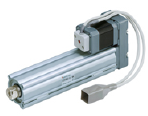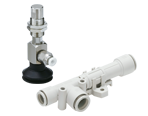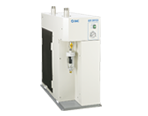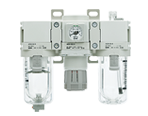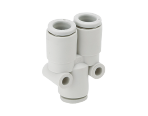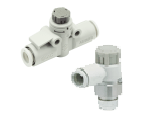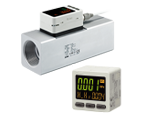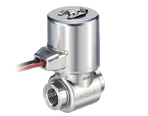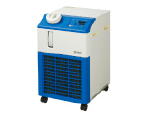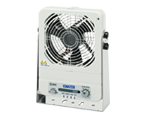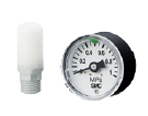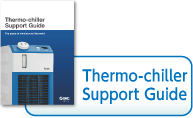
●Temperature fuse
A fuse in which an internal metal wire melts, breaking the circuit when exposed to a temperature exceeding the set temperature. When this kind of fuse blows, it cannot be reset and must be replaced.
●Thermal relay
A circuit protection device incorporated into the power input circuit of a motor to provide output when motor overcurrent is detected. It is comprised of a heater which heats up in response to current, and a bimetal which opens and closes a contact in response to that heat. Since the thermal relay itself cannot open and close a high capacity power circuit, the main circuit for a motor or other device is broken by incorporating a control circuit with an electromagnetic contactor or relay.
●Thermistor
A temperature sensor employing a semiconductor with electrical resistance that changes in accordance with the temperature. There are two types,
PTC: positive temperature coefficient (a type for which the resistance increases as the temperature rises)
NTC: negative temperature coefficient (a type for which the resistance decreases as the temperature rises.)
The resistance value is generally large, amounting to several MΩ, and there is little influence from the resistance of the conductive wires, so a 2-wire configuration is generally used.
●Thermo couple
This is created by forming a loop, connecting the ends of two wires made of two different metals, and by keeping the two wires at separate temperatures at the connecting point.
Thermoelectric power is generated according to this temperature differential (the Seebeck effect).
As a sensor, by keeping the end of one wire at a standard temperature and measuring the thermoelectric power generated, it can determine the temperature of the other wire terminal. A thermo couple is a sensor employing this principle.
●Thermo-module
→ Peltier device
●Thermoelectric device
→ Peltier device
●Thermoelectric system
A temperature control system that uses a Peltier element to directly cool and heat a liquid, gas or solid.
Heat exchangers suitable for fluids are installed on both sides of the Peltier element, with the fluid to be temperaturecontrolled on one side of the element while the heat exchanger on the other side is used to dissipate heat.
●Thermostat
A switch that turns ON or OFF when it reaches a certain set temperature. Most thermostats are bimetallic.
They are sometimes used for direct temperature control, such as switching a heater ON or OFF, but are also used often for safety circuits which switch OFF when the temperature becomes abnormally high.
The switch can be returned to its original position either automatically or manually.
●Three-phase power supply
With three-line AC current or AC voltage, the phases of the lines are shifted by 120°.
The current values of each line are 1/ 3 smaller than single phase with the same level of transmitted power, so thinner wires can be used. There is also the advantage that a rotating magnetic field can be easily produced. (It is possible to use a 3-phase motor with a simple structure.)
A 3-phase power supply is used for equipment with high output.
●Time division proportional output
When controlling output of a heater or other device via a relay or SSR, this method of operation makes the ratio of ON time to OFF time proportional to the control output over a fixed time (0.2 to 1.0 sec) in accordance with a previously set time cycle.
For example, if the control cycle is 1.0 sec, and the control output is 70%, then the ON time will be 0.7 sec and the OFF time 0.3 sec.
●Turbine pump
→ Vortex pump

